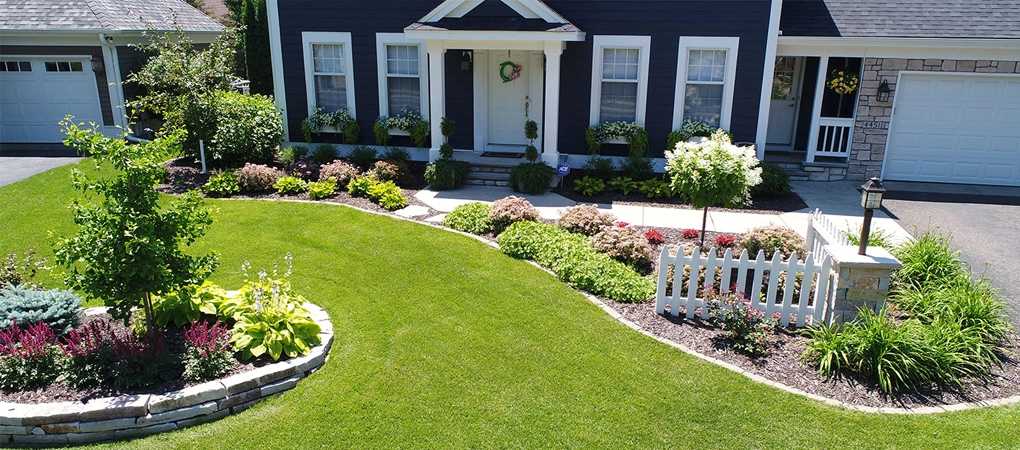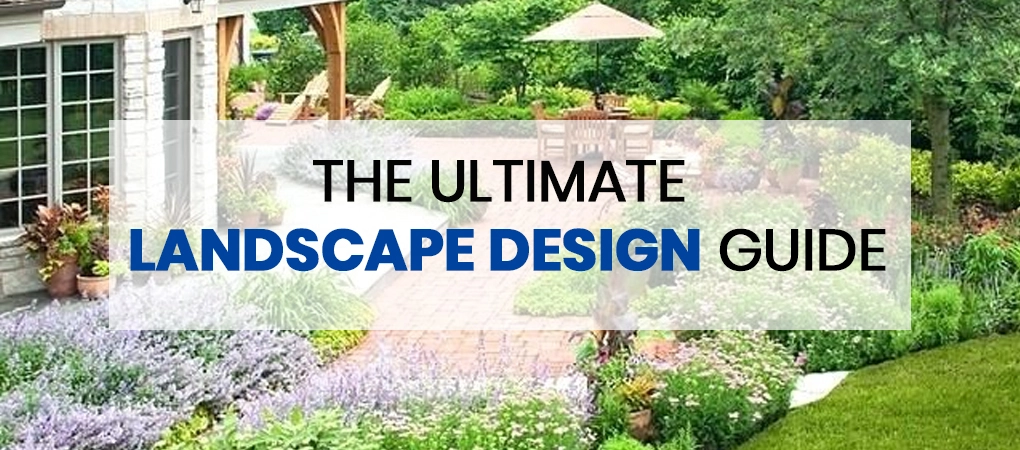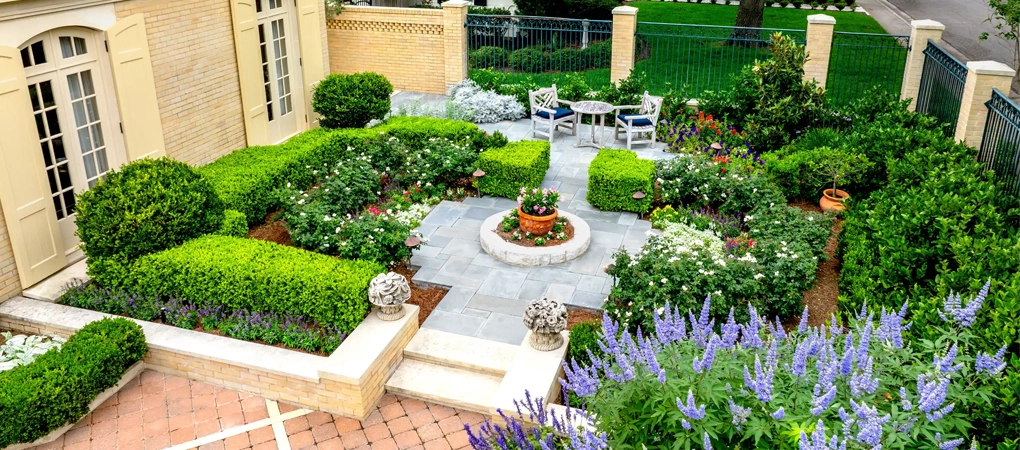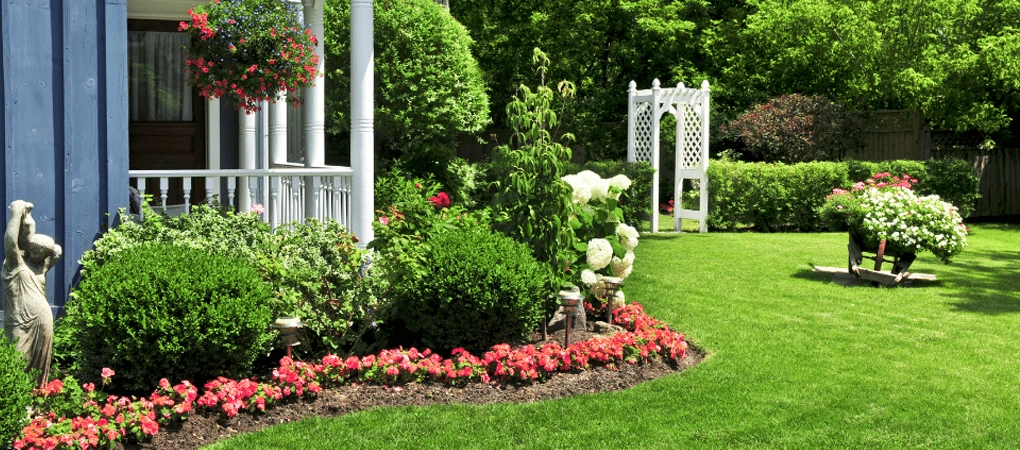Designing your dream yard doesn’t require a degree in architecture; it’s just the right strategy. This guide breaks down landscape design into digestible steps that balance beauty, function, and long-term success.
Getting Started with Landscape Design
Before diving into plants and pathways, it’s essential to understand the foundation of landscape design. This section introduces what landscape design means, how it differs from basic landscaping, and why it’s a smart investment for your home. You’ll learn how thoughtful planning can elevate your yard’s beauty, function, and long-term value.
What is Landscape Design?
Landscape design is the thoughtful planning and arrangement of outdoor spaces. It combines nature and structure to create a functional and beautiful environment around your home. Unlike basic landscaping, which focuses on maintenance (like mowing or planting), landscape design is about layout and intention, similar to interior design, but for your yard.
Why Landscape Design Matters
A well-designed landscape does more than look good — it transforms how you live outdoors. Smart design improves functionality, enhances curb appeal, and boosts your property value. It also plays a key role in sustainability by supporting native ecosystems and conserving resources. Whether you’re creating a peaceful retreat or a space to entertain, landscape design helps you make the most of your yard in a way that’s both beautiful and practical.
- Curb Appeal: A well-designed yard instantly boosts your home’s appearance
- Functionality: You get spaces tailored to how you live — relaxing, gardening, or entertaining.
- Increased Property Value: Professionally designed landscapes can increase home value by up to 15%.
- Environmental Benefits: Using native plants and smart layouts supports local ecosystems and reduces water and chemical use.
Step-by-Step Guide to Designing Your Dream Yard
This step-by-step guide helps homeowners design their dream yard with clarity and confidence. It covers everything from planning and layout to plant selection and finishing touches. Perfect for creating a personalized, functional, and beautiful outdoor space.

Step 1: Set Clear Goals
Start with how you want to use your space. Are you envisioning a peaceful retreat, a play area for kids, or a lush garden? Your lifestyle will shape your design.
Also, consider your style. Do you lean toward modern minimalism or a more natural, free-form look? Creating a mood board can help visualize your ideas.
Step 2: Analyze Your Space
Observe your yard’s conditions throughout the day:
- Sun & Shade: Which areas get full sun or deep shade?
- Wind & Drainage: Where does water collect? Are there strong breezes?
- Soil Type: Knowing your soil helps with plant selection.
- Existing features: Trees, patios, and slopes should be mapped and considered.
This analysis will help you avoid common mistakes and choose the right plants and materials.
Step 3: Plan Functional Zones
Good landscape design mimics a well-laid-out home. Divide your yard into zones based on use:
- Entertaining area (patio, fire pit)
- Play space (grass, sandbox)
- Quiet nook (hammock, garden bench)
- Garden or veggie patch
Also, plan walkways or transitions between zones. Think about flow — how people will move around the space.
Step 4: Create a Visual Concept
Sketch your ideas on paper or use design software like SketchUp or iScape. Begin placing elements like trees, seating areas, and walkways. Focus on the overall structure first; the plants come later.
Step 5: Choose Plants and Materials
Your plant choices should align with your climate, soil, and sunlight.
- Native plants: These are low-maintenance and naturally suited to your region.
- Layering: Combine trees.
- Seasonal Interest: Use a mix of plants that bloom in different seasons.
For materials, consider:
- Hardscape: Patios, walkways, fences, and walls.
- Textures & Colors: Mix smooth and rough textures, and balance bold plants with more neutral tones.
Step 6: Finalize the Plan
Once your concept is clear:
- Draw to scale if possible
- Set a budget and timeline
- Decide what’s DIY and what needs professional help
You don’t have to do everything at once — consider phasing your project over time.
Key Tips for Successful Landscape Design
Unlock the secrets to a stunning, low-stress yard that turns heads year-round. From smart planning to eye-catching plant combos, these pro tips bring style and structure to any outdoor space. Design with purpose, grow with confidence.
Plan for Plant Growth
New plants might look small at first, but in a year or two, they’ll spread. Always check the mature size and space accordingly to avoid overcrowding. It mainly depends on caring properly about it and maintaining all the necessary things properly.
Design for All Seasons
Include evergreen plants, deciduous trees, and seasonal bloomers. This ensures your yard has visual interest year-round, not just in spring. Many people want to keep seasonal flowers, and many love to keep indoor plants. As per the family members’ individual choices, the plant design should be done.
Quantity vs. Variety
Too much variety can feel chaotic. Instead, use groupings and repetition. For example, plant three of the same shrubs in a row instead of mixing three different ones. It depends on the site where the plants will be placed. Depending on the structure, it will be selected, and the quantity of variety will be selected.
Use the Golden Ratio
This design principle (roughly 60/40 or 1.6:1) helps you create balance. For example, let lawn cover 60% of your space and plant beds 40%. It’s a subtle rule that creates harmony.
Include a Focal Point
A focal point gives your yard a “centerpiece,” something to draw the eye and anchor the space. This could be a sculpture, a tree, a water feature, or a fire pit.
Combining smart planning, seasonal design, balanced variety, and a strong focal point creates a landscape that’s both beautiful and practical. With help from Landscape Design, your yard can thrive and impress year-round.
Common Landscaping Mistakes and How to Avoid Them
Avoid costly yard regrets with this quick guide to the most common landscaping slip-ups. From overcrowding plants to ignoring sunlight and soil needs, learn what to skip—and what to do instead—for a yard that thrives. Smart fixes, beautiful results.
Overcrowding
Don’t cram plants together just because they look good in the nursery. Leave space for air and light to prevent diseases and give each plant room to shine.
Ignoring Growth Habits
Not all plants grow straight up. Some spread, some vine, and some get massive. Research their growth patterns so you don’t end up with blocked paths or hidden features. The best way to increase growth is to provide proper nutrients and trimming to give them a great shape.
Choosing the Wrong Plants
Don’t fight your environment. If your soil is sandy and dry, stick with drought-tolerant plants. If it’s clay-heavy, pick species that don’t mind wet roots. Depending on the space and environment, it may be different when choosing plants.
Misplacing Focal Points
Your focal point should be easily visible — ideally from inside the house as well as in the yard. Don’t hide it behind trees or put it too close to a wall.
Where to Find Landscape Design Inspiration
Sometimes a thought comes to our mind about where we will find the design I am looking for, and how to find it. Well, there are a lot of solutions for this thought; some of them are,
Books and Magazines
Nowadays, there are many books and magazines available both online and offline that include a lot of landscaping design.
Online Resources
- Pinterest: Search for themed boards like “modern backyard” or “shade garden.”
- Instagram: Follow tags like #landscapedesign or #diygarden
- YouTube: Watch tutorials or time-lapse transformations
When to Hire a Professional
If your yard has grading issues or drainage challenges, or you want a high-end finish, consider hiring a landscape designer or architect. They can help with technical drawings and permit processes, too.
Conclusion
Landscape design is both a creative and practical process. With some planning and inspiration, you can transform your outdoor space into something that reflects your lifestyle and grows more beautiful over time.
Whether you’re tackling a full backyard redesign or just adding a new flower bed, start with a plan and let nature do the rest.




